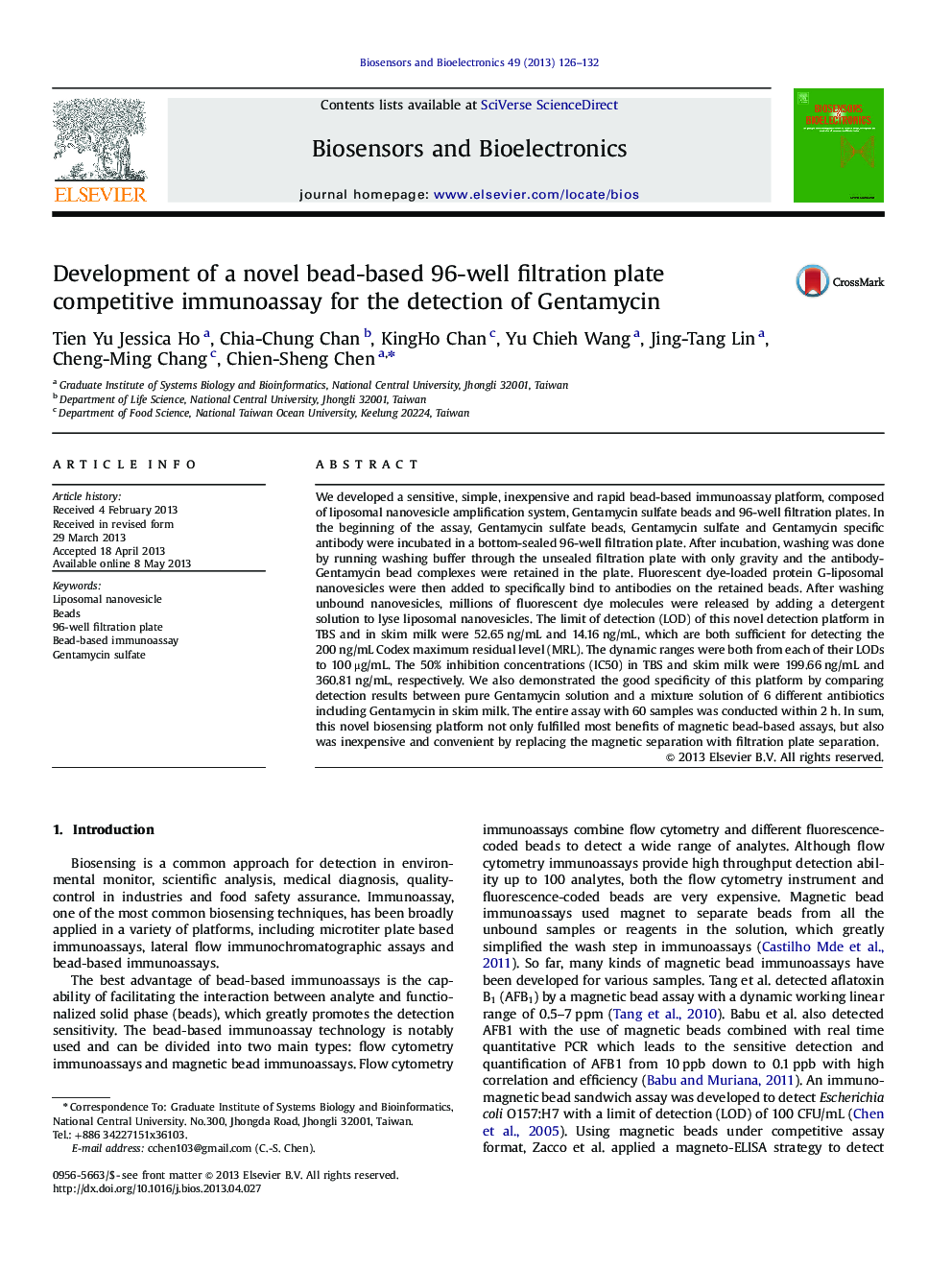| Article ID | Journal | Published Year | Pages | File Type |
|---|---|---|---|---|
| 7233841 | Biosensors and Bioelectronics | 2013 | 7 Pages |
Abstract
We developed a sensitive, simple, inexpensive and rapid bead-based immunoassay platform, composed of liposomal nanovesicle amplification system, Gentamycin sulfate beads and 96-well filtration plates. In the beginning of the assay, Gentamycin sulfate beads, Gentamycin sulfate and Gentamycin specific antibody were incubated in a bottom-sealed 96-well filtration plate. After incubation, washing was done by running washing buffer through the unsealed filtration plate with only gravity and the antibody-Gentamycin bead complexes were retained in the plate. Fluorescent dye-loaded protein G-liposomal nanovesicles were then added to specifically bind to antibodies on the retained beads. After washing unbound nanovesicles, millions of fluorescent dye molecules were released by adding a detergent solution to lyse liposomal nanovesicles. The limit of detection (LOD) of this novel detection platform in TBS and in skim milk were 52.65 ng/mL and 14.16 ng/mL, which are both sufficient for detecting the 200 ng/mL Codex maximum residual level (MRL). The dynamic ranges were both from each of their LODs to 100 μg/mL. The 50% inhibition concentrations (IC50) in TBS and skim milk were 199.66 ng/mL and 360.81 ng/mL, respectively. We also demonstrated the good specificity of this platform by comparing detection results between pure Gentamycin solution and a mixture solution of 6 different antibiotics including Gentamycin in skim milk. The entire assay with 60 samples was conducted within 2 h. In sum, this novel biosensing platform not only fulfilled most benefits of magnetic bead-based assays, but also was inexpensive and convenient by replacing the magnetic separation with filtration plate separation.
Keywords
Related Topics
Physical Sciences and Engineering
Chemistry
Analytical Chemistry
Authors
Tien Yu Jessica Ho, Chia-Chung Chan, KingHo Chan, Yu Chieh Wang, Jing-Tang Lin, Cheng-Ming Chang, Chien-Sheng Chen,
